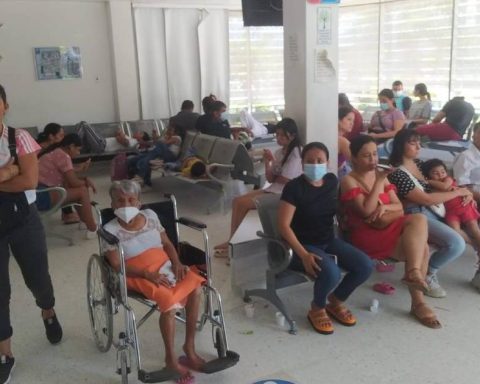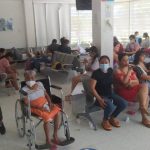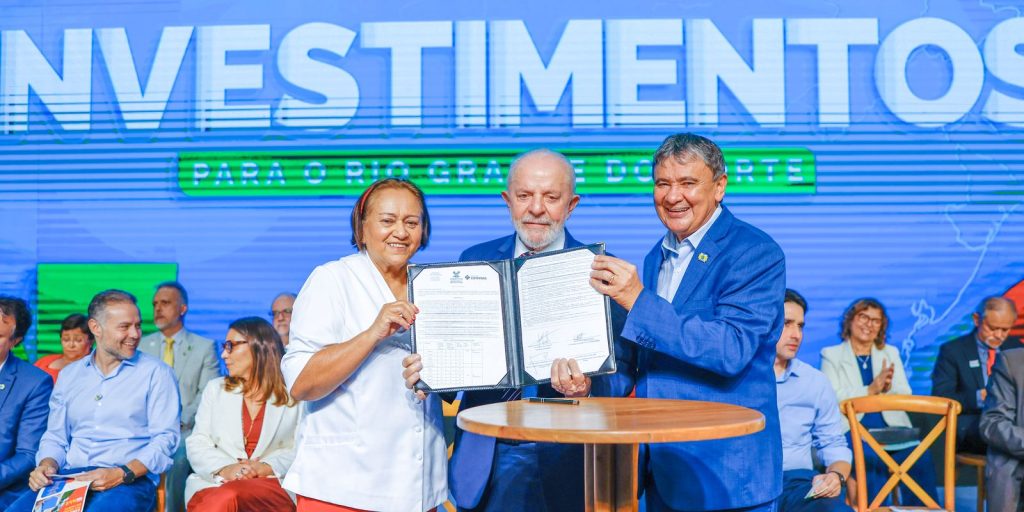Bogotá, with a score of 7.40 out of 10; Medellín and its metropolitan area (AM), with 6.73; and Tunja, with 6.40; They led the ranking of the Cities Competitiveness Index (ICC) 2024, which was presented this Wednesday, October 16, in Bucaramanga, by the Private Competitiveness Council (CPC) and the Universidad del Rosario.
(Read more: Decrease in school population in Colombia: how it is affected by the birth rate)
The ‘top’ 5 of the most competitive cities in the country was completed by Cali and its AM (6.27) and Manizales and its AM (6.27).
According to the Universidad del Rosario and the CPC, one of the most important results of the ICC 2024 was “the progress recorded in most cities in their competitive performance“. This could be evidenced in that 26 of the 32 cities evaluated presented an increase in their overall score compared to the results observed in the 2019 measurement.
“The result reflects encouraging news regarding the development trends followed by the capital cities of the department in the last six years, and the progress in closing regional gaps“, they concluded.
The data showed that Inírida (Guainía), Yopal (Casanare) and Armenia (Quindío) had the most significant advances, with increases in their annual averages of 2.7%; 2.1%; and 1.9% in their overall score, respectively, in the last six years.
On the other side of the scale, the alarms went off in the case of Leticia (Amazon), which was the capital that reduced its general score the most between 2019 and 2024, with an average annual drop of 1.9%.
Another piece of information that generated a warning was that when comparing the evolution of the best in the measurement (Bogotá) with the worst (Mitú – Vaupés), was observed “an increase in the difference in score from 4.6 in 2019 to 4.9 in 2024, a result that is explained by the fact that Bogotá increased its score at a higher rate (0.8%) than Mitú did (-0 .6%)“.
“We believe that the ICC 2024 is a crucial input for the current situation. We want this exercise, made available to citizens, the private sector, academia, and local governments, to contribute to enriching the debate on the country’s major issues from a subnational approach to competitiveness.“, he assured Ana Fernanda Maiguashca, president of the CPC.
(More news: How viable would it be for the Colombian economy to eliminate holiday weekends?)
Departmental Competitiveness Index 2023.
iStock
(See: ‘Resources sought to be collected are not used’: alert from the comptroller on tax)
The breakdown of the results
Bogotá ranked first in the ICC in 7 of the 13 pillars analyzed in the measurement. In the case of Medellín and its AM, it was explained that “continues in second place thanks to its good results in most of the pillars, especially in infrastructure and equipment, business environment and market size, in which it occupies second place“.
And the capital of Boyacá maintained the third place overall thanks to the fact that it was located in the ‘top’ 3 in 6 of the 13 pillars,”standing out particularly in the financial system, where it occupies first place“.
The cities that closed the Index were Puerto Carreño (Vichada), in 30th place and with a score of 3.09; Inírida, in box 31 and with a score of 2.94; and Mitú, in 32nd place with 2.45 points.
In the general ranking, Yopal rose three positions, while Florencia (Caquetá), Inírida, and Ibagué (Tolima) They advanced one each.
Regarding falls, Villavicencio (Meta) dropped three places and Pasto (Nariño), Sincelejo (Sucre) and Mitú lost one each.
Andrés García-Suaza, dean of the Faculty of Economics at the Universidad del Rosario, He highlighted three cities in the ranking: Yopal, for achieving the greatest advance in the general ranking; Bucaramanga and its AM, for its commitment to training and employment; and Armenia, for its advances in basic education.
For the CPC and the Universidad del Rosario, the “ICC 2024 is consolidated as an input built integrally with a systemic vision of competitiveness, allowing the cities and metropolitan areas of the country to recognize their strengths and weaknesses compared to the rest of the capitals. This, in turn, makes it possible to identify positive policies that can be replicated and continued, as well as areas of improvement on which to focus efforts and resources.“.
(Read more: With a balance in the red: airline losses grew 55.4% in the first half of the year)

Competitiveness
iStock
(Read more: Almost 150 photo cameras could be turned off in December if permits are not renewed)
What is the ÍCC and how is it measured?
Basically, The Cities Competitiveness Index evaluates the competitive performance of the 32 capital cities of the departments of Colombia.
“The measurement is made up of 98 indicators (hard data) from official national sources.“, with which it is consolidated “a multidimensional diagnosis of the territories“from four competitiveness factors (enabling conditions, human capital, market efficiency, and innovative ecosystem) of which 13 pillars are detached.
The four competitiveness factors are explained as follows:
– Enabling conditions: “It reflects the territory’s provision of basic equipment and capabilities that allow its inhabitants to effectively enjoy their rights.“. The pillars that this factor evaluates are institutions, infrastructure and equipment, ICT adoption and environmental sustainability.
– Human capital: “Accounts for the conditions that allow the population to access a better quality of life through health and education.“Precisely, the pillars it evaluates are health, basic and secondary education, and higher education and training for work.
– Market efficiency: “It shows the ease of doing business and the dynamism of the economy“. Evaluates the pillars of the business environment, labor market, financial system, market size.
– Innovative ecosystem: “Evaluates the productive diversification of the territory, as well as its capabilities and results in terms of innovation, seen from scientific research and the production of knowledge and intellectual property.“. Its pillars are sophistication and diversification, and innovation.
For the ICC 2024, in addition, adjustments were made to the measurement methodology and a new method of standardization of the variables was established, “which facilitates the comparison of the results of cities with each other and the analysis of the evolution of their performance over time“.
Also the names of some pillars were changed and variables were included or eliminated to measure some pillars, as well as the readjustment of some data sources in specific cases.
(More news: Almost 150 photo cameras could be turned off in December if permits are not renewed)
PORTFOLIO

















